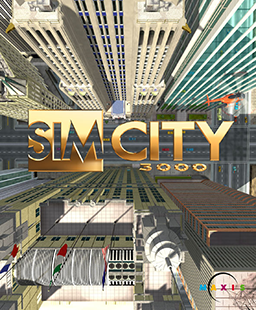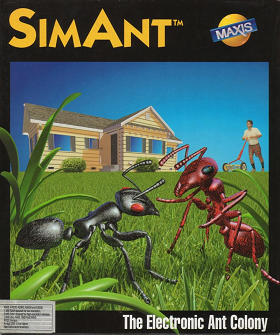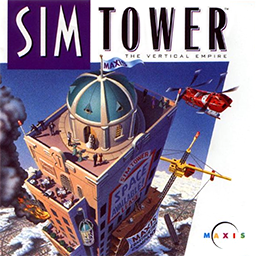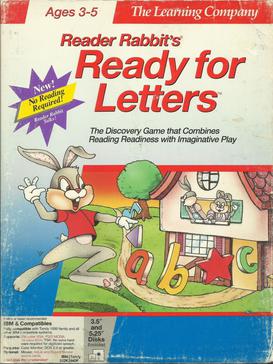Related Research Articles

Maxis is an American video game developer and a division of Electronic Arts (EA). The studio was founded in 1987 by Will Wright and Jeff Braun, and acquired by Electronic Arts in 1997. Maxis is best known for its simulation games, including The Sims, Spore and SimCity.

SimCity, also known as Micropolis or SimCity Classic, is a city-building simulation video game developed by Will Wright, and released for several platforms from 1989 to 1991. SimCity features two-dimensional graphics and an overhead perspective. The game's objective is to create a city, develop residential and industrial areas, build infrastructure, and collect taxes for further city development. Importance is placed on increasing the population's standard of living, maintaining a balance between the different sectors, and monitoring the region's environmental situations to prevent the settlement from declining and going bankrupt.

William Ralph Wright is an American video game designer and co-founder of the game development company Maxis, which later became part of Electronic Arts. In April 2009, he left EA to run Stupid Fun Club Camp, an entertainment think tank in which Wright and EA are principal shareholders.

SimCity 2000 is a city-building simulation video game jointly developed by Will Wright and Fred Haslam of Maxis. It is the successor to SimCity Classic and was released for Apple Macintosh and MS-DOS personal computers in 1993, after which it was released on many other platforms over the following years, such as the Sega Saturn and SNES game consoles in 1995 and the PlayStation in 1996.

SimCity 3000 is a city building simulation video game released in 1999, and the third major installment in the SimCity series. It was published by Electronic Arts (EA) and developed by series creator Maxis. It was released for Microsoft Windows, Macintosh, and, through an arrangement with Loki Games, Linux.

SimAnt: The Electronic Ant Colony is a 1991 life simulation video game by Maxis and the company's third product, focusing on ants. It was designed by Will Wright. In 1992, it was named "Best Simulation Game" at the Software Publishers Association's Codie awards. SimAnt was re-released in 1993 as part of the SimClassics Volume 1 compilation alongside SimCity Classic and SimLife for PC, Mac and Amiga. In 1996, SimAnt, alongside several of Maxis' simulation games were re-released under the Maxis Collector Series with greater compatibility with Windows 95 and differing box art, including the addition of Classics beneath the title.

SimTower: The Vertical Empire is a construction and management simulation video game developed by OPeNBooK and published by Maxis for the Microsoft Windows and Macintosh System 7 operating systems in November 1994. In Japan, it was published by OPeNBook that same year and was later released for the Sega Saturn and 3DO in 1996. The game allows players to build and manage a tower and decide what facilities to place in it, in order to ultimately build a five-star tower. Random events take place during play, such as terrorist acts that the player must respond to immediately.

SimFarm: SimCity's Country Cousin is a video game in which players build and manage a virtual farm. It was developed by Maxis and released in 1993 as a spin-off of SimCity. The game included a teacher's guide to teaching with SimFarm with blackline masters to be photocopied for the class and a user manual. In 1996, SimFarm and several other Maxis simulation games were rereleased under the Maxis Collector Series, with greater compatibility with Windows 95 and differing box art, including the addition of Classics beneath the title.
Life simulation games form a subgenre of simulation video games in which the player lives or controls one or more virtual characters. Such a game can revolve around "individuals and relationships, or it could be a simulation of an ecosystem". Other terms include artificial life game and simulated life game (SLG).

The Playroom is a video game first created in 1989 for DOS, Apple II and Macintosh computers. The game was compatible with the TouchWindow utility. It was ported to the Amiga and FM Towns computers in 1992 and 1994 respectively and then remade for Microsoft Windows and Macintosh in 1995. It was designed for ages 3 to 6 manufactured by Broderbund. A follow-up game titled The Treehouse came in 1991 as well as a sequel to this game, called The Backyard in 1993.

Mike Perry was creative director at Maxis and Electronic Arts, where he worked on many of the Sim games. He produced and designed the award-winning title SimFarm, and both produced and programmed Yoot Saito's award-winning title SimTower. As of 2011, he is an executive producer at Zynga, managing the FarmVille game.
SimCity is an open-ended city-building video game franchise originally designed by Will Wright. The first game in the series, SimCity, was published by Maxis in 1989 and was followed by several sequels and many other spin-off "Sim" titles, including 2000's The Sims, which itself became a best-selling computer game and franchise. Maxis developed the series independently until 1997, and continued under the ownership of Electronic Arts until 2003. EA commissioned various spinoffs from other companies during the 2000s, focusing on console and mobile releases. A 2013 EA-Maxis reboot was subject to what has been described as "one of the most disastrous launches in history", which may have triggered the 2015 shutdown of Maxis Emeryville and the end of the franchise.

SimRefinery is a computer management simulation game designed to simulate Chevron's Richmond refinery operation. It was developed by the Maxis Business Simulations division of Maxis in 1993. John Hiles, who was the head of the Maxis division, was a lead designer on the project.

Disney's Animated Storybook is a point-and-click adventure interactive storybook video game series based on Walt Disney feature animations and Pixar films that were released throughout the 1990s. They were published by Disney Interactive for personal computers for children ages four to eight years old. Starting from 1994, most of the entries in the series were developed by Media Station. They have the same plots as their respective films, though abridged due to the limited medium.

The Incredible Machine is a puzzle video game released in 1993, and the first release in The Incredible Machine video game series. The objective of the game is to create Rube Goldberg machines by arranging collections of objects in a complex fashion, so as to perform some simple task. The Even More Incredible Machine was an extended version of the original, also released in 1993; it had 160 levels, about twice the number of levels in the original game, and had more parts to use in the contraptions.
Madeline is a series of educational point-and-click adventure video games which were developed during the mid-1990s for Windows and Mac systems. The games are an extension of the Madeline series of children's books by Ludwig Bemelmans, which describe the adventures of a young French girl. The video-game series was produced concurrently with a TV series of the same name, with characters and voice actors from the show.

3-D Dinosaur Adventure is an educational video game by Knowledge Adventure released on CD-ROM for MS-DOS compatible operating systems in 1993. Versions for Macintosh and Windows 3.x were published in 1996. A 1997 re-release and an updated version for Macintosh and Microsoft Windows is titled 3-D Dinosaur Adventure: Anniversary Edition.

Reader Rabbit's Ready for Letters is a 1992 video game and the fifth game of the Reader Rabbit franchise. Although a spin-off title, it is designed for ages 3 to 6 to teach prereaders about becoming literate and phonics.
Kewala's Typing Adventure is a 1996 Australian educational typing-themed video game, featuring a koala protagonist named Kewala. It was developed by Sydney-based software company Typequick, and localised by Japan Data Pacific for the Japanese market. The game was renamed Typequick for Students in 1997 and, by 2002, was called Success With Typing for Students.
References
- ↑ Buckleitner, Warren (September 1995). School Tools - The best software to boost your child's learning. Working Mother Media.
- ↑ Maxis Electronic Entertainment Expo, May 1995, Summary of Products; The Software Toys Catalog; News releases | 102710196 | Computer History Museum. Maxis. 1995. Retrieved 2019-09-05.
{{cite book}}:|website=ignored (help) - ↑ Official Gazette of the United States Patent and Trademark Office: Trademarks. U.S. Department of Commerce, Patent and Trademark Office. 1996.
- ↑ Keizer, Gregg (1996). The Family PC guide to homework. Internet Archive. New York : Hyperion & Family PC. ISBN 978-0-7868-8206-9.
- ↑ Media, Working Mother (September 1995). Working Mother. Working Mother Media.
- ↑ "Work masquerading as play". The Sydney Morning Herald . August 8, 1995. p. 43. Retrieved 2019-09-05– via Newspapers.com.
- 1 2 "Blog | The Obscuritory - Page 5" . Retrieved 2022-08-25.
- ↑ Children's Software Revue. Active Learning Associates. 1993.
- ↑ "IF YOU CAN'T DO . . ". The Washington Post.
- ↑ "The Jerusalem Post, 1996, Israel, English : Free Download, Borrow, and Streaming : Internet Archive".
- ↑ Maxis Electronic Entertainment Expo, May 1995, Summary of Products; The Software Toys Catalog; News releases. Maxis. 1995.
- ↑ Dennis Publishing (May 1997). PC Zone - Issue 50 (May 1997).